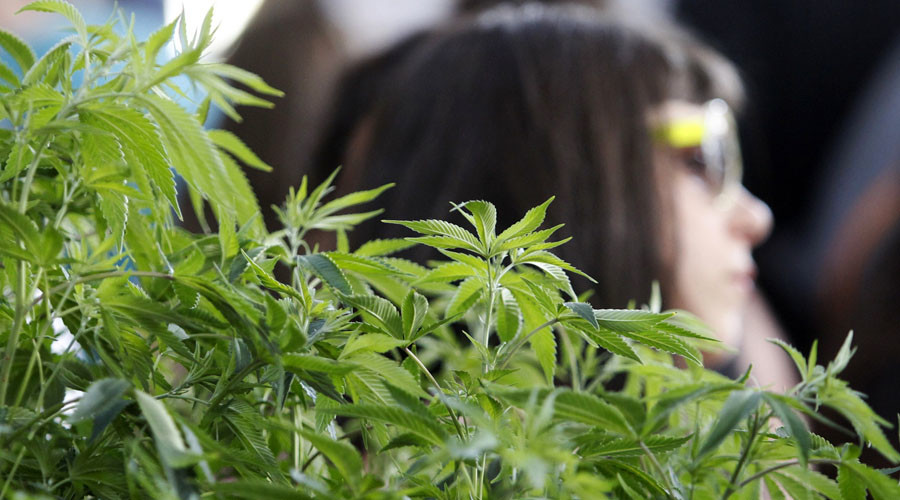Jacob Redmond
Well-Known Member
Israeli researchers have discovered that cannabis can be effectively used in healing broken bones and maybe other skeletal illnesses.
Scientists from the Tel Aviv University revealed that cannabis has a component which enhances the healing process of fractured bones. The study was published in the Journal of Bone and Mineral Research.
A curative component, called cannabidiol (CBD), sped up healing processes in the broken leg bones of trial rats with mid-femoral fractures. CBD is non-psychotropic and is also effective when isolated from tetrahydrocannabinol (THC), the main psychoactive component of cannabis.
"While there is still a lot of work to be done to develop appropriate therapies, it is clear that it is possible to detach a clinical therapy objective from the psychoactivity of cannabis. CBD, the principal agent in our study, is primarily anti-inflammatory and has no psychoactivity," said Dr. Yankel Gabet of Tel Aviv's Bone Research Laboratory, as cited by the Tel Aviv university website.
To illustrate these findings, scientists tested two different groups of rats - one was treated with both CBD and THC while the other one only with CBD.
"We found CBD alone to be sufficiently effective in enhancing fracture healing," Gabet explained.
"Other studies have also shown CBD to be a safe agent, which leads us to believe we should continue this line of study in clinical trials to assess its usefulness in improving human fracture healing," he added.
The researchers also found that human cannabinoid receptors stimulate bone growth. That means further studies of marijuana usage to treat osteoporosis and other skeletal diseases are to come.
"We only respond to cannabis because we are built with intrinsic compounds and receptors that can also be activated by compounds in the cannabis plant," Gabet said.
"The clinical potential of cannabinoid-related compounds is simply undeniable at this point," he added.
Medical cannabis also provides bone tissue with mineralization, so it protects bones from further injury, making them less fragile. "After being treated with CBD, the healed bone will be harder to break in the future," Gabet explained.
This is not the first study devoted to the health properties of marijuana. It has been linked to effective treatment of epilepsy, Multiple Sclerosis, Alzheimer's and Parkinson 's diseases. It is also used to soften the negative effects of chemotherapy in cancer patients, treat chronic pain, and help people struggling with post-traumatic stress disorder.

News Moderator: Jacob Redmond 420 MAGAZINE ®
Full Article: Marijuana may help heal broken bones ? new study ? RT News
Author: Web Staff
Contact: feedback@rttv.ru
Photo Credit: Steve Dipaola
Website: RT
Scientists from the Tel Aviv University revealed that cannabis has a component which enhances the healing process of fractured bones. The study was published in the Journal of Bone and Mineral Research.
A curative component, called cannabidiol (CBD), sped up healing processes in the broken leg bones of trial rats with mid-femoral fractures. CBD is non-psychotropic and is also effective when isolated from tetrahydrocannabinol (THC), the main psychoactive component of cannabis.
"While there is still a lot of work to be done to develop appropriate therapies, it is clear that it is possible to detach a clinical therapy objective from the psychoactivity of cannabis. CBD, the principal agent in our study, is primarily anti-inflammatory and has no psychoactivity," said Dr. Yankel Gabet of Tel Aviv's Bone Research Laboratory, as cited by the Tel Aviv university website.
To illustrate these findings, scientists tested two different groups of rats - one was treated with both CBD and THC while the other one only with CBD.
"We found CBD alone to be sufficiently effective in enhancing fracture healing," Gabet explained.
"Other studies have also shown CBD to be a safe agent, which leads us to believe we should continue this line of study in clinical trials to assess its usefulness in improving human fracture healing," he added.
The researchers also found that human cannabinoid receptors stimulate bone growth. That means further studies of marijuana usage to treat osteoporosis and other skeletal diseases are to come.
"We only respond to cannabis because we are built with intrinsic compounds and receptors that can also be activated by compounds in the cannabis plant," Gabet said.
"The clinical potential of cannabinoid-related compounds is simply undeniable at this point," he added.
Medical cannabis also provides bone tissue with mineralization, so it protects bones from further injury, making them less fragile. "After being treated with CBD, the healed bone will be harder to break in the future," Gabet explained.
This is not the first study devoted to the health properties of marijuana. It has been linked to effective treatment of epilepsy, Multiple Sclerosis, Alzheimer's and Parkinson 's diseases. It is also used to soften the negative effects of chemotherapy in cancer patients, treat chronic pain, and help people struggling with post-traumatic stress disorder.

News Moderator: Jacob Redmond 420 MAGAZINE ®
Full Article: Marijuana may help heal broken bones ? new study ? RT News
Author: Web Staff
Contact: feedback@rttv.ru
Photo Credit: Steve Dipaola
Website: RT



